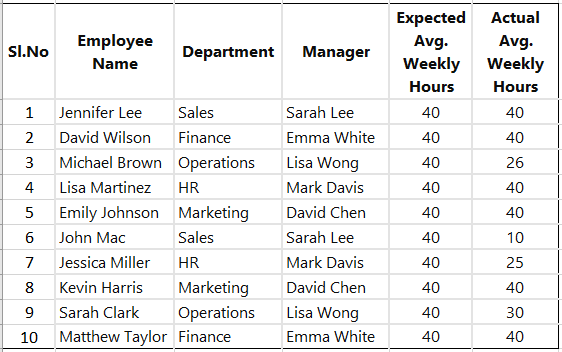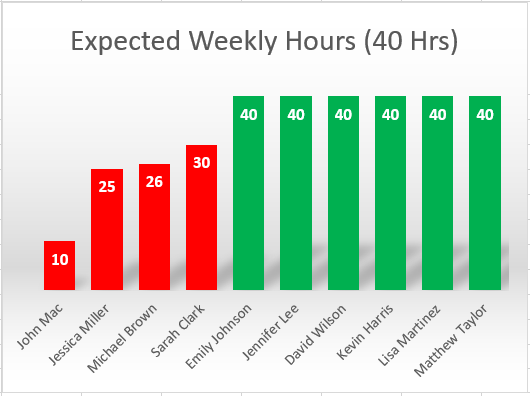
For any organization, business intelligence is the key. It helps everyone - regardless of job, title, or sector - work with, and understand, various forms of data. This enables better, quicker, smarter decision-making.
So what is Business Intelligence? Well, let me show you.
A large tower
At 330 metres (1,083 ft), the Eiffel Tower is a tall iron structure with a lattice pattern. It is the height of an 81-storey building. An iconic symbol of Paris, it weighs over 10,000 tons, or some 7,000 cars, or 1.0 × 10^8 bananas. Its square base measures 125 metres (410 ft) on each side.
Or, focus on this image:

Which information was more effective and catchier for you to understand? The answer is visualization.
The goal of business intelligence
Business Intelligence (BI) is a tool to help organize and analyze data, turning it into useful insights and trends.
Imagine you have a big puzzle box with hundreds of small puzzle pieces. Each piece represents a tiny piece of information. But when you open the box and put them on a table, it is just a big complex mess, right?
What if you have a paper inside it showing how these puzzles should look when completed? Now these little pieces of information suddenly make sense.
Business intelligence (BI) is like having these little pieces of paper for a company or business. Instead of puzzle pieces, it is about organizing the different pieces of information a company collects (for example, sales numbers, budget, employee details, or project information).
Just as the puzzle paper helps you see the whole picture, BI helps put these pieces together correctly so that businesses can see the full picture of what's happening quickly and effectively. It is like having a special tool to unlock the secrets hidden in all those puzzle pieces!
Business Intelligence helps companies understand what is going well, what needs improvement, and how they can make smarter decisions to succeed.
BI mainly helps the Heads of Departments, Human Resources, Project Managers and Team Leads.
Do you need technical knowledge to understand BI visuals? No!
See the sample Excel tables below showing employees' time in the office.
Well, John Mac is in a tough spot. And unfortunately for him, you can see it easily in the bar graph on the right!
So if Excel can sort and generate graphs, why the need for a specialised BI tool? Well for this 10-row data, basic sorting can do the job.
But what if you have a huge amount of data with hundreds or thousands of data points? Excel has as limitations when it comes to handling large volumes of complex data and generating meaningful insights quickly.
That is when BI comes into its own.
Let's look at some of the advantages of BI for understanding data.
- Scalability: BI tools are designed to handle large volumes of data from multiple sources, whereas Excel can become slow with large datasets.
- Visualization: BI tools offer advanced visualization capabilities, allowing users to create interactive visuals to represent data more understandably. Excel charts are limited in terms of customization and interactivity.
- Data Integration: BI tools can easily integrate data from various sources such as databases, or cloud services. Excel requires manual data entry and manipulation, which can be time-consuming and prone to error.
- Advanced Analytics: BI tools include built-in analytics features such as predictive modeling and machine learning enabling users to uncover insights and trends that may not be apparent with basic Excel functions.
- Collaboration and Sharing: BI platforms provide centralized repositories for storing and sharing reports and dashboards, therefore enabling collaboration and ensuring everyone has access to the most up-to-date information. Excel files on the other hand can be difficult to share and maintain across teams.
Overall Excel is a versatile tool for basic data analysis but BI tools offer more powerful capabilities for organizations that need to manage, analyze, and derive insights from large and diverse datasets. Complex data can be interpreted easily and clearly with powerful BI tools.
Providing Business Intelligence in a company
Now wondering how to impprove BI in an organiastion? It involves several steps. Briefly, they are:
- Objectives: Identify which information the organisation needs or wants to know.
- Data: Identify the data sources within your organization and determine which data is relevant to the organisation's objectives.
- Data analysis, visualization and sharing: A skilled BI specialist can utilize BI tools relevant to your company to analyse the data, and visualize using powerful charts, graphs and more. The stakeholders can then get a clear understanding of their business, what is working, and what is not.
- Training and adoption: Train employees and users on how to use BI dashboards effectively and encourage adoption across the organization.
- Continuous improvement: Regular updates and reviews to stay up to date.
- Data security: Implement measures to ensure data security, privacy, and compliance with regulations while sharing the dashboards across different teams or amongst employees.
Let Business Intelligence transform your decision-making. Because we human beings are naturally inclined towards visuals over lengthy text. Our brains are wired to process images more efficiently and quickly absorb information presented in visual formats compared to long blocks of text.
Further reading:
The Basic Concepts of Data
Top 10 Skills for Business Intelligence Analysts
Image: depositphotos, Canva









